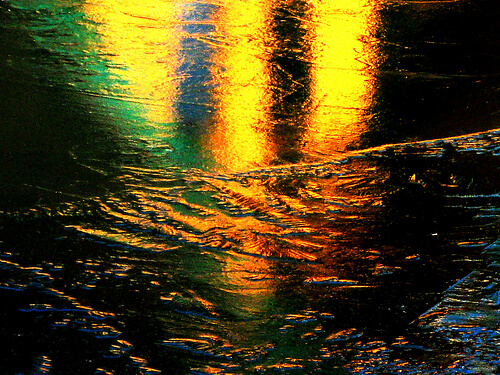 As many of you know, snow hasn’t been the major driving issue these past few months in Anchorage. The real culprit for many auto accidents has been black ice.
As many of you know, snow hasn’t been the major driving issue these past few months in Anchorage. The real culprit for many auto accidents has been black ice.
While many of us have years—even decades—of experience driving during Alaskan winters, we still may not have the best idea of how to handle our vehicles on black ice. Black ice is typically invisible to the driver, with a loss in traction seemingly coming out of nowhere.
First, please understand that black ice is regular ice: it’s just called “black” because it blends into the pavement. It is a clear glaze that forms on roads, sidewalks, and driveways because of light freezing rain.
Black ice forms most commonly in the early morning or at night when the sun isn’t around to warm the roads. During the day, it tends to appear on parts of the road without sunshine, such as along tree-lined roads or in a tunnel. Black ice also appears frequently on roads that do not get heavy traffic.
Bridges are particularly hospitable to black ice, as the cool air underneath the bridge freezes the water from above and below the ground.
Although black ice is typically transparent, you can see it in just the right light. Black ice almost always forms in very smooth, glossy sheets. If you’re driving on a road that is mostly dull black, but there appears to be a shinier patch up ahead, you may be about to drive on black ice.
If you do drive onto black ice, don’t panic. A recent article from WikiHow shows you how to best avoid a car or truck accident:
- The general rule is to do as little as possible and allow the car to pass over the black ice.
- Do not hit the brakes, and keep steering the wheel straight.
- If you feel the back end of your car sliding left or right, make a very gentle turn in the same direction. (If you struggle against the slide by turning in the opposite direction, you’ll likely skid or spin out.)
- Slow down by decelerating. Again, do not touch the brakes: this will cause you to skid.
- If you can, shift into a lower gear. This will hopefully give you more control of your vehicle.
- Head for areas of traction. This may include textured ice ahead, snow-covered areas, or spots with sand.
- If you are about to go off the road, try to steer into something that will cause minimal damage, like an empty field or even a snow bank. Of course, this will be happening so fast that you may not have time to think about where your vehicle will end up, but it is worth trying.
If you have been injured in a car or truck accident in Alaska due to an encounter with black ice, be sure to seek medical attention. If the accident was caused in part by someone else’s negligence, contact an experienced Alaska car accident injury attorney today.
Photo Credit: peggyhr via Compfight cc
The post Watch Out for Black Ice on Alaska Roads appeared first on Kelley & Canterbury, LLC.

